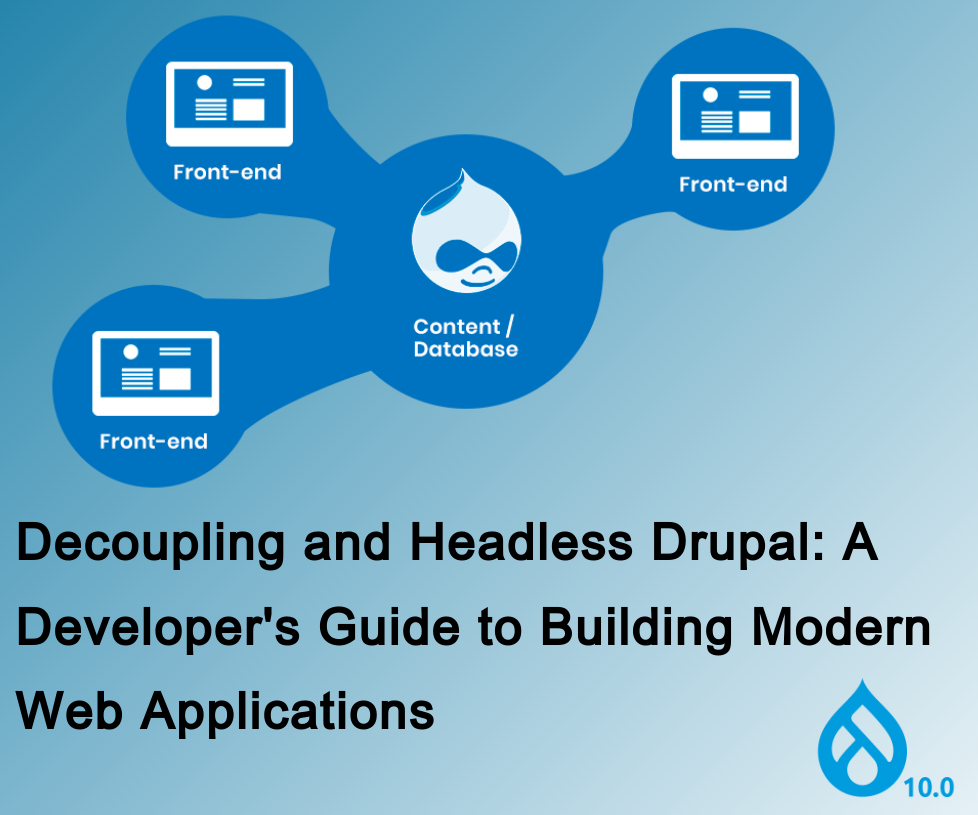
Today we will explore decoupled Drupal, where the frontend and backend of your web application operate independently, unlocking a new level of flexibility, scalability, and user experience. Whether you're a seasoned Drupal developer or just starting your journey, this guide will equip you with the knowledge and skills necessary to harness the power of decoupling and headless architecture.
What is Decoupling Drupal?
Imagine a traditional Drupal website where both the content management and presentation layers reside within the Drupal CMS. This monolithic approach can limit your choices when it comes to frontend technologies and user experience design. Decoupling Drupal breaks these barriers by separating the frontend from the backend, allowing you to choose the most suitable frontend framework, such as React, Vue.js, or Angular, to create a truly customized and engaging user interface.
Benefits of Decoupling Drupal
- Unleash Frontend Flexibility: Break free from Drupal's theming system and embrace the latest frontend frameworks to create a unique and tailored user experience.
- Scale with Ease: The decoupled architecture allows independent scaling of the frontend and backend, ensuring optimal performance as your traffic grows.
- Enhanced User Engagement: Create more interactive, dynamic, and device-agnostic user interfaces that cater to modern user expectations.
Challenges of Decoupling Drupal
- Learning Curve: Decoupling introduces a new layer of complexity, requiring developers to understand both frontend and backend technologies.
- API Reliability: Robust APIs are crucial for seamless data exchange between the decoupled components.
What is Headless Drupal?
Headless Drupal takes decoupling a step further, removing the frontend entirely. Drupal becomes a content repository, exposing its content through APIs, making it accessible to any frontend technology or platform. This approach offers even greater flexibility but also demands more frontend development expertise.
Benefits of Headless Drupal
- Multi-Channel Content Delivery: Deliver content seamlessly to websites, mobile apps, IoT devices, and more, ensuring consistency across platforms.
- Future-Proof Architecture: Adapt to emerging technologies and user expectations with an API-driven approach.
Challenges of Headless Drupal
- Custom Frontend Development: Building a frontend from scratch requires more effort than using Drupal's built-in theming system.
Real-World Use Cases
- Enterprise Solutions: Manage diverse tech stacks across departments with decoupled Drupal's integration capabilities.
- E-commerce Platforms: Deliver content to multiple channels, including websites, mobile apps, and voice assistants.
- Media and Publishing: Provide a consistent user experience across devices and platforms with headless Drupal.
Decoupling and Headless Drupal in Action
- Content Modeling: Define your content structure and relationships using Drupal's content types and fields.
- API Establishment: Configure and secure Drupal's REST API to expose content to the frontend.
- Frontend Development: Build the frontend application using your chosen technology stack, consuming content from Drupal's API.
- Integration and Deployment: Integrate the frontend and backend for seamless data exchange and user experience. Deploy the decoupled application to a hosting environment.
Conclusion
Decoupling and headless Drupal represent a paradigm shift in web development, empowering developers to create modern, performant, and engaging web applications. Embrace this new era of flexibility and unleash your creativity with Drupal as your content management powerhouse.
Add new comment